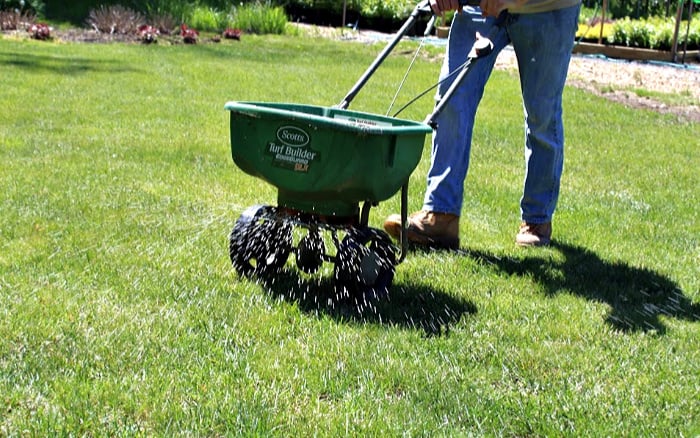An important part of maintaing a healthy lawn is to ensure it is well fed, but how often and how much should you fertilize your lawn in a year?
Find out here!
There are a few different factors that will affect how often you need to fertilize your lawn such as grass type, growing climate and desired lushness.
Our general rule for most lawn varieties is 3-4 times a year at the beginning of every season but consider some of these other points below on how often to fertilize your lawn.
Why do you need to fertilize your lawn?
Grasses make their own food through the process of photosynthesis. So, although we call fertilizing ‘feeding’ your lawn, we are really just supplementing a process that already happens.
The reason for fertilizing is that there is usually a lack of the required nutrients your lawn needs in the soil.
This is due to the fact that our grasses are not originally from the exact same soil conditions we experience in our yards.
As a result, we need to supplement the existing nutrient levels, so we can achieve a balance of all the nutrients your lawn needs to stay in top shape.
When the correct amount of nutrients are applied, your lawn will be able to grow and perform to its maximum potential.
If it is lacking nutrients, your lawn may look hungry and need a boost of nutrients to get back to its former glory.
What factors can affect how much I fertilize?
Lawn Variety
Most lawns such as buffalo, kikuyu, zoysia and common couch varieties need fertilizing 3-4 times a year and the beginning of every season is an easy way to remember when to do it.
The most important fertilizes are Autumn and Spring, to prepare your lawn for winter and to help bounce it back out of it.
If you have TifTuf Bermuda, your fertilizing regime might look a little different.
As TifTuf is already a fast-growing grass, applying too much fertilizer will increase this growth rate, so you have to mow more.
Over fertilizing can also cause other issues such as thatch and excessive salt build up in the soil which can make water difficult to be absorbed.
TifTuf Bermuda is happy with a fertilise twice a year in Autumn and Spring.
Fertilizer Type
Not all fertilizers are made equal. They can work differently and be suited to different applications depending on their ingredients and formulation.
Liquid fertilizers will give a short surge of growth to your lawn, where others are controlled release and work evenly over a longer period.
We like to use both liquid and granular fertilizers depending on how quickly we want to see results.
Liquid fertilizers are great in mid spring after renovating your lawn and slow release granular fertilizers are particularly good in autumn to ensure your lawn is fed all through winter.
Fertilizing Tips
✔ When applying fertilizer read the label for rates, but generally 20 grams per square metre is recommended in most cases, so two kilograms will do an average 100 square metre lawn.
✔ You must water in your fertilizer after applying, otherwise you risk burning the leaf of the grass.
If you don’t have a pop-up irrigation system, it’s a good idea to apply your fertilizer before heavy rain to save water. You can also set up a sprinkler or water it in well by hand with a hose.
✔ If you have a pH imbalance, fertilizing won’t be as effective. Test your soil’s pH level to ensure your lawn is able to absorb the nutrients it requires, instead of applying additional fertilizer, as this could be potentially harmful.
✔ Only fertilize your lawn a few times a year. Additional light applications of particular nutrients can be applied if you are trying to rectify a lawn issue or if your lawn has experienced difficult growing conditions and requires a quick boost of nutrient for recovery.









